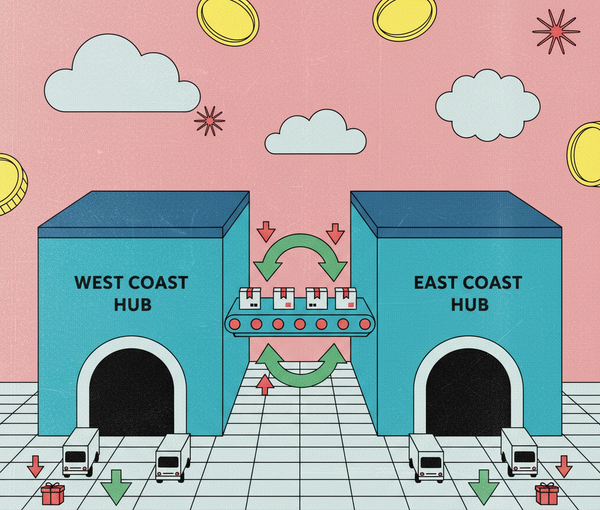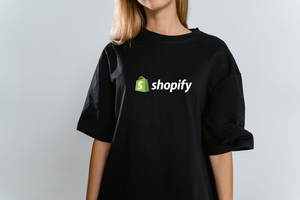When you’re managing multiple warehouses, the complexity can skyrocket. This guide helps you to choose and implement the perfect Shopify app for product bundles, transforming your multi-warehouse fulfillment into a seamless, profit-generating machine.
The power of product bundles: boosting sales and streamlining fulfillment
For Shopify merchants, custom bundles are more than a sales tactic—they’re a growth strategy. Instead of relying on single-item purchases, you can package individual products together into curated sets or let customers mix and match bundles. Presenting these bundle options directly on the product page creates a seamless buying experience that feels personalized and convenient.
The result is a measurable lift in Average Order Value (AOV). Shoppers are encouraged to purchase multiple items in one checkout session, increasing revenue without extra advertising costs. By showcasing custom bundles as part of your ecommerce merchandising strategy, you transform simple product pages into high-conversion assets that boost sales and long-term growth.
From a business perspective, bundles help move inventory more efficiently while elevating the customer experience. Instead of managing only individual products, you create compelling offers that drive higher AOV without increasing marketing spend. A shopper who encounters a well-designed bundle on the product page is more likely to purchase multiple items together, increasing AOV and improving fulfillment.
The right Shopify app makes this even easier by connecting your bundles to inventory systems, fulfillment workflows, and your Shopify admin. This ensures bundles—whether pre-set or mix-and-match bundles—stay in sync with stock levels and pricing while giving you the insights you need to track their impact on AOV over time.
Why bundles are a game-changer for your online store
When customers buy a multi-pack or a set of curated products, their Average Order Value (AOV) naturally increases. Product bundles also help move slow inventory by pairing it with best-sellers. They enhance the customer experience with curated collections and simplify Shopify checkout by reducing friction. From a marketing perspective, Shopify product bundles create endless opportunities for promotions, storytelling, and improved SEO.
The unique challenges of bundles with multiple warehouses
Here’s where things get tricky. When a customer orders bundles, their components may sit in different warehouses. Without the right Shopify app, this causes overselling, broken fulfillment logic, and support headaches in the Shopify admin.
Key challenges include:
- Accurate inventory counts across all locations.
- Smart routing so components ship from the closest warehouse.
- Coordinated shipping for bundled orders.
- Preventing overselling across warehouses.
Choosing the right Shopify bundle app: key considerations
When selecting a Shopify app from the Shopify app store, focus on features that solve multi-warehouse pain points. Many of the best Shopify apps for bundling support these functions:
- Inventory synchronization across locationsA non-negotiable! The app must track bundles and individual SKUs in real time across your warehouses.
- Dynamic fulfillment logicYour app should automatically identify the optimal shipping setup—whether consolidating to a single warehouse or splitting components intelligently.
- Seamless Shopify integrationA strong bundle app works inside the Shopify admin while integrating with WMS, 3PL, and sales channels.
- User-friendly interfaceEasy creation and modification of bundles, bundle performance insights, and stock visibility from your dashboard.
- Analytics and reportingMeasure AOV impact, profitability, and multi-pack performance.
Top Shopify bundle app for order fulfillment
Simple Bundles & Kits
- Breakdown into individual SKUs When a bundle is purchased, Simple Bundles converts it into its component items in the Shopify order. That means your pick/pack/ship process still sees “normal” SKUs rather than opaque bundle SKUs. This avoids confusion in fulfillment and makes integration with 3PLs, WMS, or ERP smoother.
- Real-time inventory sync of components across multiple locations The app keeps track of stock at the component level. If one item in a bundle is low or out of stock, it can block or adjust availability of the bundle. That prevents overselling.
- Supports complex bundle types & unlimited options You can do mix & match, multi-packs, BOGO, subscriptions, B2B kits, and infinite options bundles that surpass Shopify’s variant limits. That flexibility means your fulfillment system doesn’t have to be constrained by bundle design.
- Integration compatibility with fulfillment systems It works with 3PL, WMS, ERP, shipping apps (ShipStation, etc.), and syncs bundle data so downstream systems see item-level detail. Having this kind of integration reduces manual intervention and errors.
- Reliable performance & merchant trust It holds “Built for Shopify” status (a mark of technical quality) and has high ratings (4.9 stars on the Shopify App Store) from hundreds of Shopify merchants. Shopify merchants often praise its support during setup and peak sales.
- Better control and analytics You get data on bundle performance, AOV (average order value) uplift, and which bundle combinations are selling. That feedback loop helps ensure your bundling strategy is efficient. Compared with Shopify’s native Bundles, Simple Bundles offers finer customization and more fulfillment-friendly features.
Implementing your chosen bundle app
Choosing the right Shopify app is only the first step. To see real impact on sales, fulfillment efficiency, and Average Order Value (AOV), you need a deliberate rollout strategy. Here’s a step by step framework to implement bundles in a way that maximizes both customer experience and operational control.
Step 1: Define your bundle strategy
Start by deciding what type of bundles best serve your business:
- Kits – Predefined sets of products packaged together (e.g., a skincare set).
- Multi-packs – Bulk purchases of the same item (e.g., buy 3 for a discount).
- Custom bundles – Flexible create bundle options where customers select products and build their own set on the product page.
When mapping out your bundles, consider:
- How will bundles lift AOV without cutting too deeply into margins?
- Which bundles highlight slow-moving inventory by pairing it with a best-selling existing product?
- How do bundles align with your brand story and customer expectations?
👉 For inspiration, see the bundle gallary with real bundles on Shopify stores.
The right configuration determines whether your bundles delight customers or cause fulfillment chaos. Inside Shopify admin, be sure to:
- Map warehouses and locations so stock deductions happen at the right site.
- Set fulfillment rules for split shipments, routing, or consolidated orders.
- Integrate with your WMS, 3PL, or shipping software to eliminate manual entry.
- Configure your product pages to show bundles clearly, with images, product variant selectors, and pricing transparency.
Step 3: Test thoroughly before launch
Testing is the difference between smooth operations and angry support tickets. Create dummy orders and verify:
- Inventory deducts correctly from each location.
- Bundles update accurately when one component sells out.
- Fulfillment orders are generated correctly, even for split shipments.
- Shipping labels and tracking sync seamlessly.
Simulate edge cases: what happens when a multi-pack sells out in one warehouse but remains available elsewhere? Can your integration handle line item accuracy across locations?
Step 4: Train your team for bundle success
Your app is only as effective as the people using it:
- Fulfillment – Teach warehouse staff how to process bundle SKUs and line items in split shipments.
- Customer service – Provide scripts for answering questions about bundle availability, shipping timelines, and returns.
- Marketing – Build campaigns that showcase bundles, upsells, and cross-sells across sales channels.
Why this matters
A well-implemented Shopify bundle app doesn’t just increase AOV. It reduces customer support tickets, avoids overselling, and automates repetitive tasks. With the right tutorials, team training, and bundle strategies, you create a system that works across your online store.
The future of fulfillment: maximizing Shopify bundles
Continuous optimization is key. Use analytics to refine bundles, explore automation for scalable growth, and keep improving your Shopify plans as your business expands. With the right app, bundle creation, clear bundle options, and seamless checkout become effortless.
By leveraging Shopify bundle apps from the Shopify app store, you’re building not just higher AOV but a stronger, more resilient fulfillment system across warehouses. The result: long-term efficiency for store owners who want to boost sales and streamline operations.





